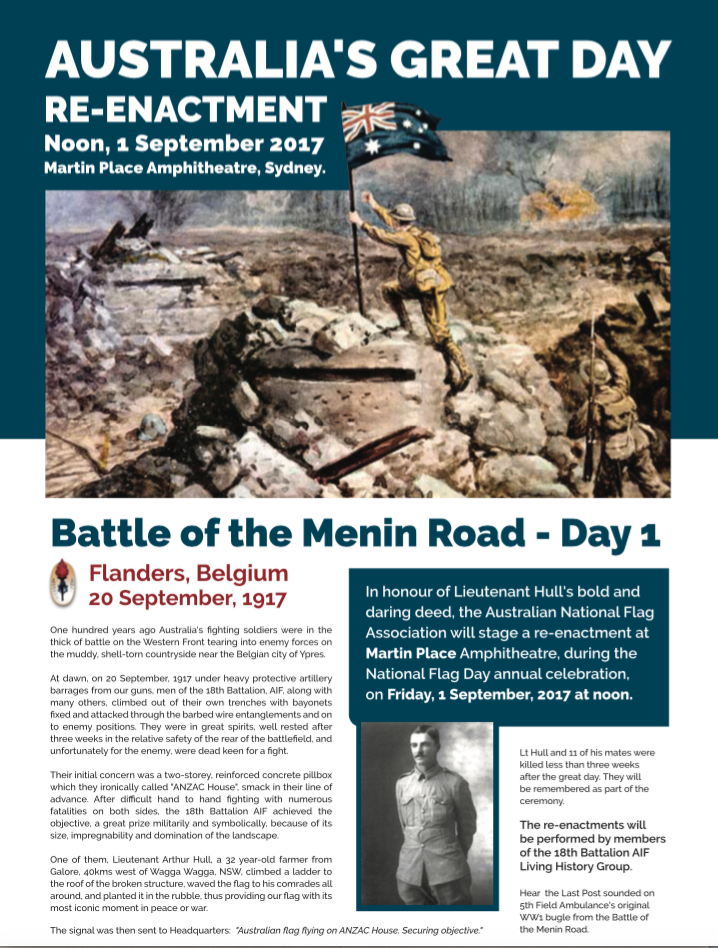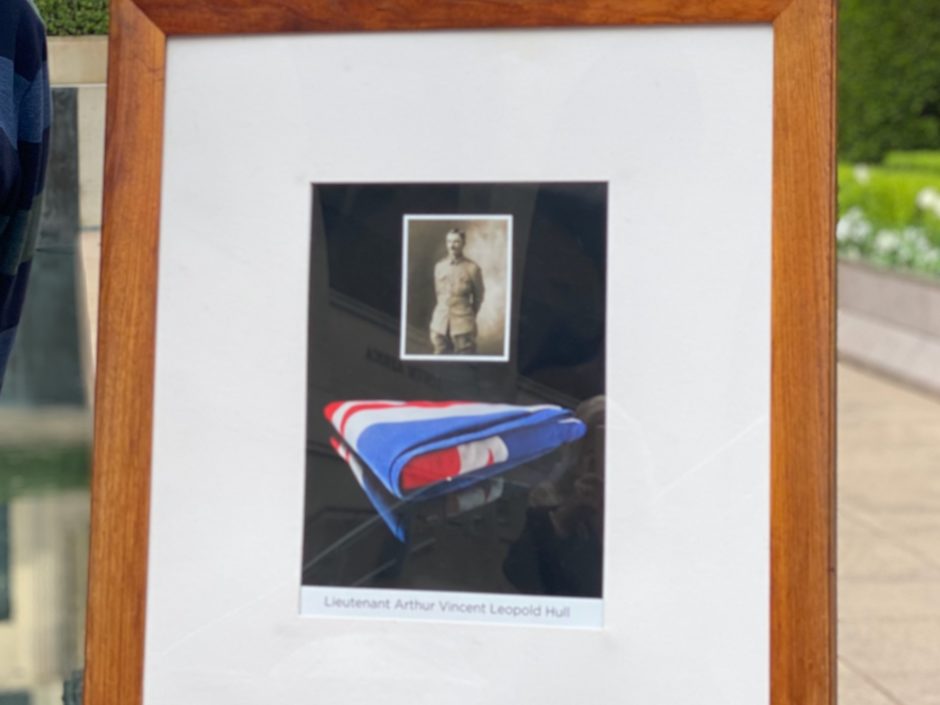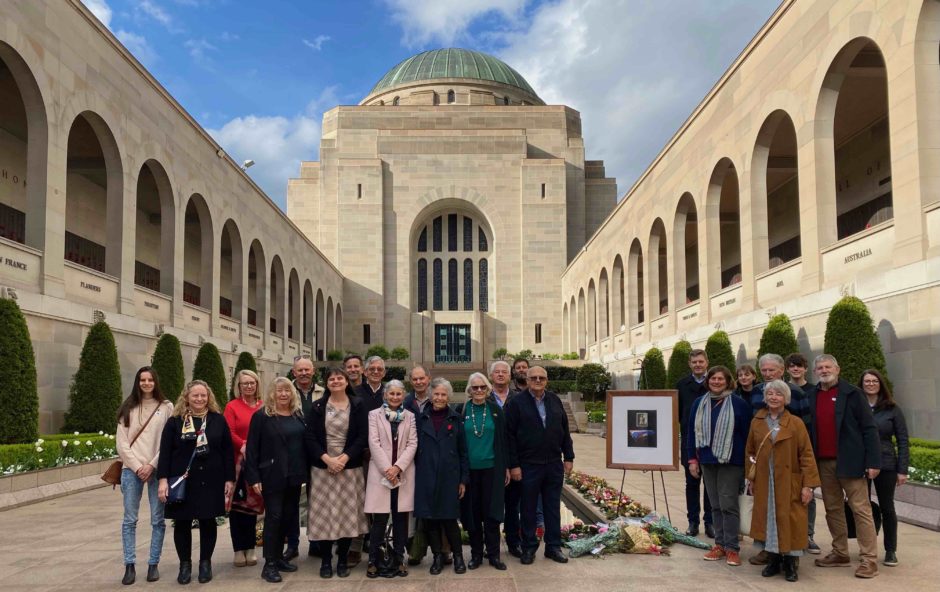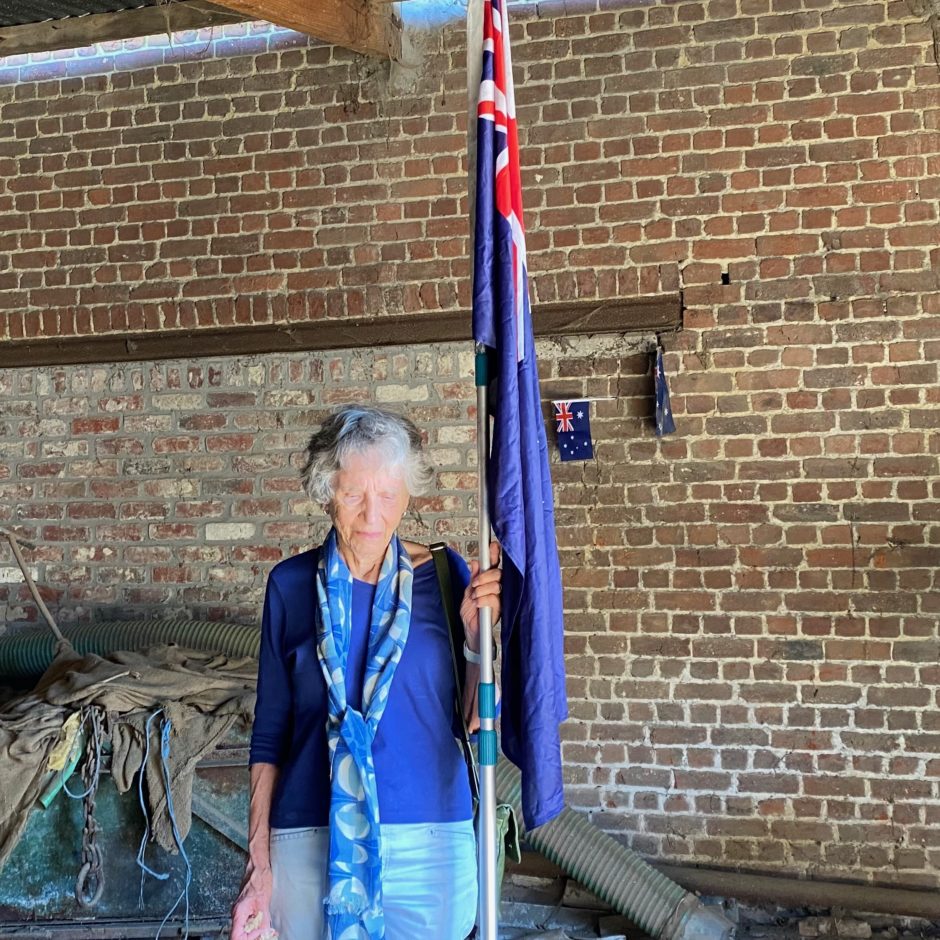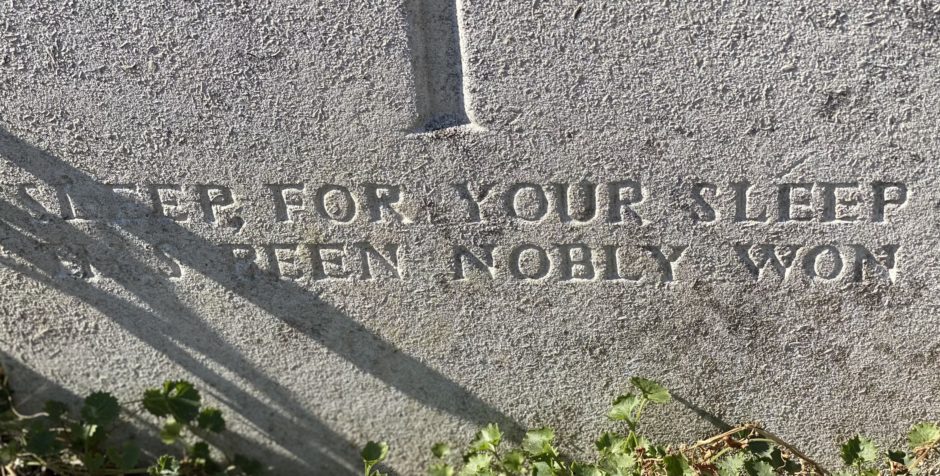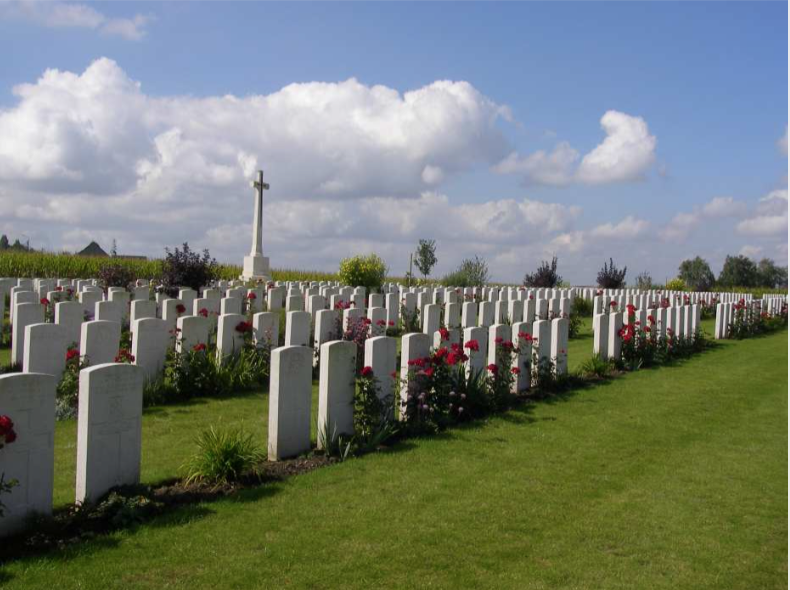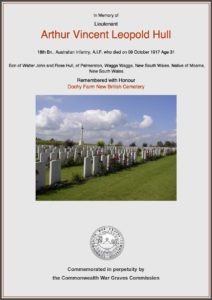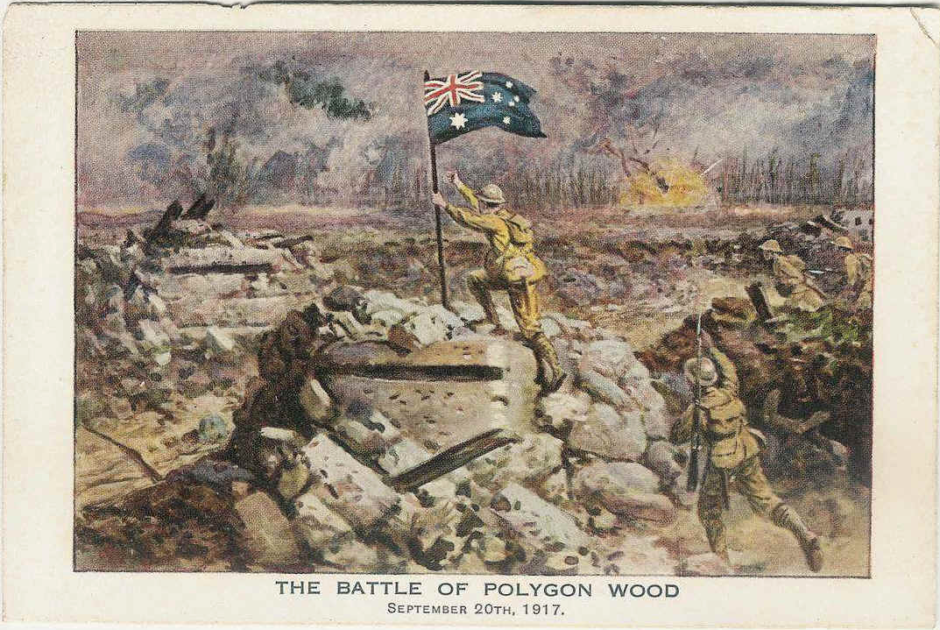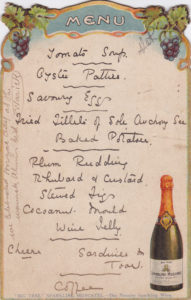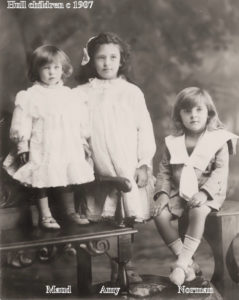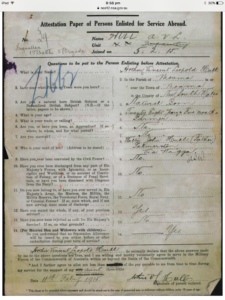There will be a commemoration on October 9, 2023, at the Friends of Flanders Field Museum in Belgium. Contact Eric for more details.
Transcript from Last Post Canberra AWM Oct 9th, 2022
April 25, 2023Today we remember and pay tribute to Lieutenant Arthur Vincent Leopold Hull.
Arthur Vincent Leopold Hull was born in 1885 to Walter and Rose Hull of Moama, New South Wales. Known as “Stid” to his family and friends, Hull was the eldest of nine siblings. He attended Echuca Grammar, and became a farmer in the district once he left school.
In February 1915, Hull enlisted in the Australian Imperial Force, and trained as a signaller at Liverpool camp near Sydney. He joined the 18th Battalion, and in June of that year embarked from Sydney on the transport ship Ceramic. Hull arrived in Egypt in July, and there he trained in the army camps outside Cairo.
The 18th Battalion landed on Gallipoli in mid-August 1915, and Hull was promoted to lance corporal. As soon as these fresh soldiers had arrived on the peninsula, they took part in a poorly-planned attack on a feature known as Hill 60. This battle was a costly defeat and half of the unit’s strength became casualties. By the end of the year, the British commanders had decided to withdraw from the peninsula
with the failure of the campaign.
After the evacuation from Gallipoli, Hull and his unit undertook further training in Egypt before proceeding to France in March 1916.
At the end of July, the 18th Battalion entered battle for the first time on the Western Front at the village of Pozieres [pron. Pozzy – air].
The Australian forces succeeded in capturing the objective, but they were then subjected to a German artillery barrage that was heavier than anything they had experienced on Gallipoli. Hull described it later to his mother in a letter:
“We got into a big push for a while and succeeded well, but lost some of our chums”.
Having shown initiative in his role as a signaller, Hull was promoted to corporal in November 1916. He and the 18th Battalion endured the bitter winter of 1916 and 1917, one of the coldest in memory, and in February 1917 he was promoted to sergeant. He was sent to complete a course of further training in signalling and excelled. As a result, his commanding officer sent him to an officer cadet school in England, and Hull was commissioned at the rank of second lieutenant in May 1917.
He re-joined the 18th Battalion in France in September.
At this time, the British commanders shifted their focus northwards, away from the Somme valley and towards the Belgian town of Ypres [pron. Eee – per]. Their objective was to capture the high ground of Flanders from the Germans, in a series of attacks that became known as the third battle of Ypres [pron. Eee – per].
The 18th Battalion entered battle at Menin Road in late September. During the fighting on that day, the unit captured a German pillbox, a large concrete defensive structure codenamed “Anzac”.
This name meant that it was of particular interest to the Australians. When it was captured, Hull raised a miniature Australian flag on the roof of the pillbox which flew until a heavy German bombardment the next day. Hull’s daring endeavour was later painted by English artist Alfred Pearse, and the image was circulated in postcard form to boost morale during the costly Flanders campaign.
In early October, Hull received the news that he was to be promoted to the rank of lieutenant. Less than a week later, on the 9th of October 1917, the 18th Battalion took part in the battle of Poelcappelle [pron. Pole – cappel]. The unit had established its headquarters in a captured German pillbox.
Hull was sending a signal using a Lucas lamp when he was struc the neck by a sniper’s bullet. His wound was being dressed in a nearby shell-hole when an incendiary shell landed in the area an
it alight. Hull and 11 other soldiers were killed in the fire.
He was 31 years old.
Arthur Hull is buried in Dochy Farm New British Cemetery, Belgium, alongside more than 1,400 soldiers of the First World War.
In Australia, he was survived by his parents and eight younger siblings. For his headstone in Belgium, his parents chose the epitaph:
“Sleep for your sleep has been nobly won.”
Lieutenant Arthur Vincent Leopold Hull is listed on the Roll of Honour on my right, among almost 62,000 Australians who died while serving in the First World War.
His photograph is displayed today beside the Pool of Reflection
This is but one of the many stories of service and sacrifice told here at the Australian War Memorial.
This is but one of the many stories of service and sacrifice told here at the Australian War Memorial.
We now remember Lieutenant Arthur Vincent Leopold Hull, who gave his life for us, for our freedoms, and in the hope of a better world.
The AWM’s Last Post Ceremony
October 10, 2022The Australian War Memorial’s Last Post Ceremony featured Stid on October 9, 2022. Members of the family were fortunate to attend and to lay wreaths and flowers in his memory. Everyone at the Australian War Memorial was so helpful and gracious, we thank them for making sure that everything went smoothly on this important day.
The service is available on You Tube: https://youtu.be/7neWWn8KaU4?t=317
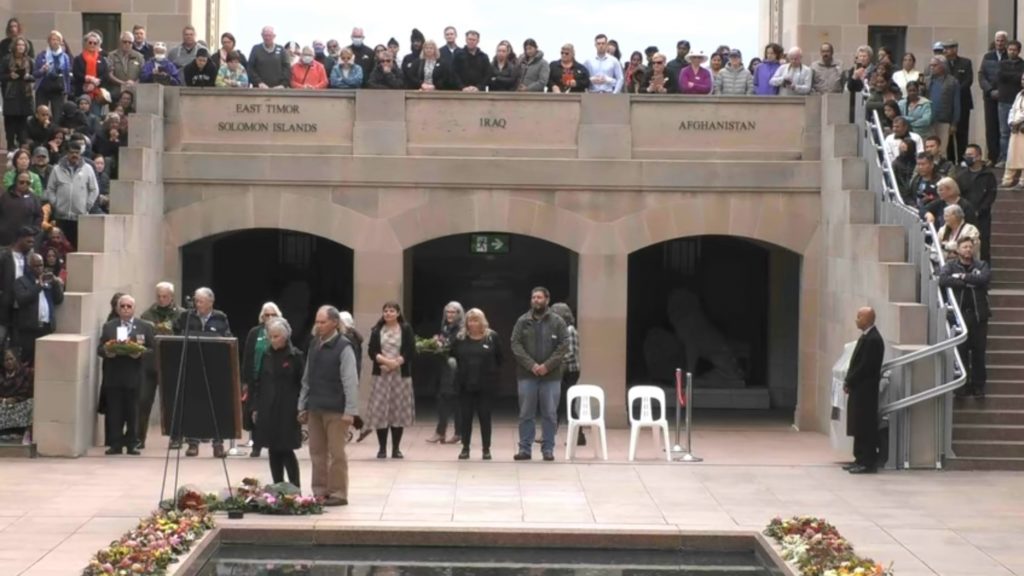
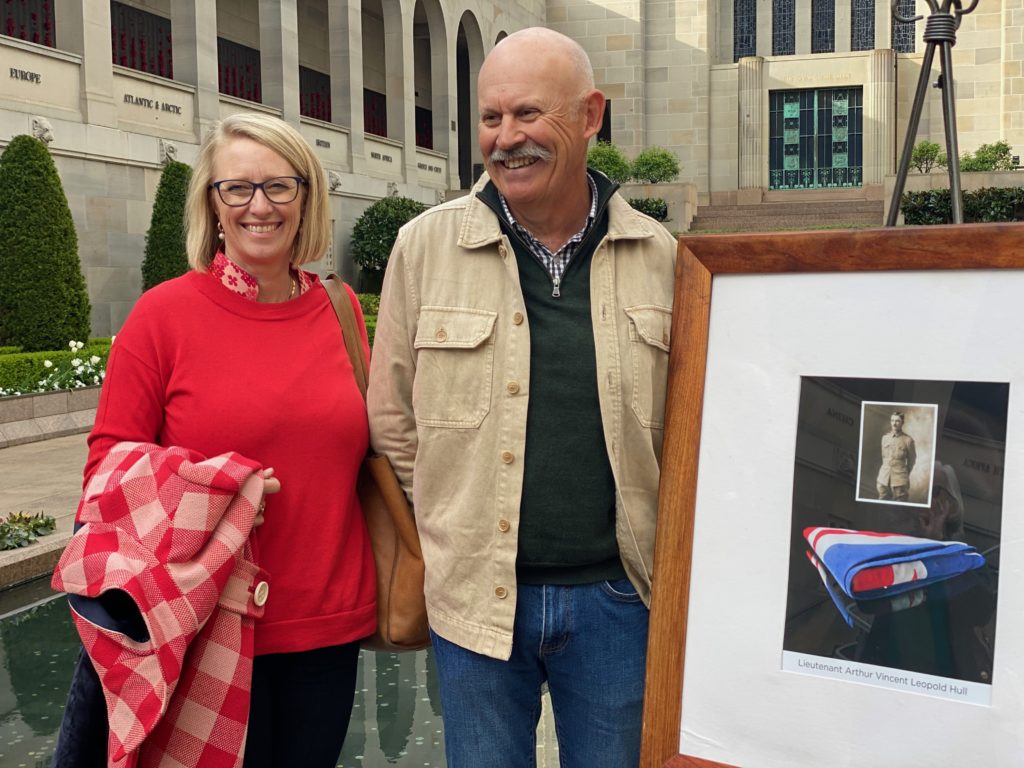
The video of ANZAC house
September 6, 2022Thanks to Steve Bloxham, we have this wonderful video of our visit to the site of ANZAC House. We are very grateful to everyone who helped us find and visit this remarkable spot. As Søren said “He was here.”
Stid’s Story at the Last Post Ceremony on October 9th
September 6, 2022October 9th, 2022, Lt A.V.L. Hull will be featured at the Last Post Ceremony at the Canberra War Memorial.
Make sure that you let Victoria know if you plan to attend – we have a block of tickets for the family. Otherwise, you can request a ticket directly from the AWM.
https://www.awm.gov.au/commemoration/last-post-ceremony
For more information, please refer to the Australian War Memorial Site
https://www.awm.gov.au/commemoration/last-post-ceremony/upcoming-ceremonies
Alison’s Interview on 2GB
August 31, 2017If you missed Alison Hine’s interview with Alan Jones on 2GB from 31 August (or want to hear it again), it is available via Podcast
Re-enactment at noon September 1, 2017 Martin Place
August 20, 2017It’s almost 100 years ago to the day that Stid climbed a ladder and waved a flag – albeit a lot smaller than what is pictured.
Please join us at the Re-Enactment. If you are going, let us know so we can tell you where to meet.
